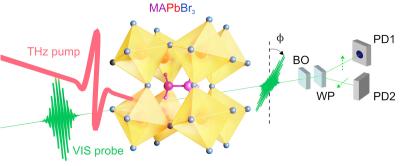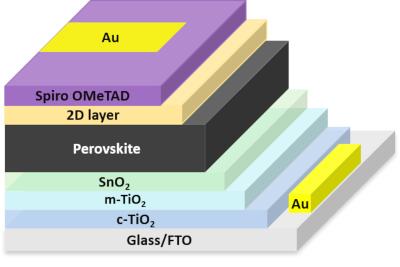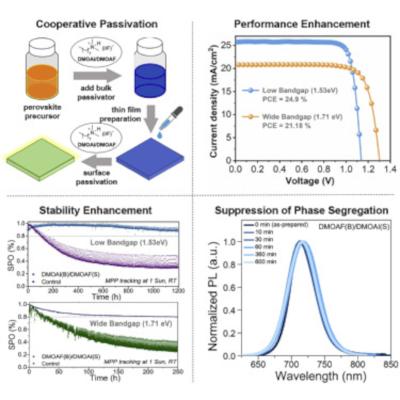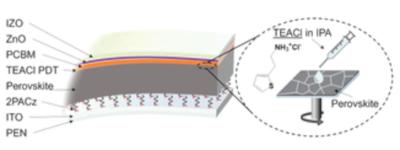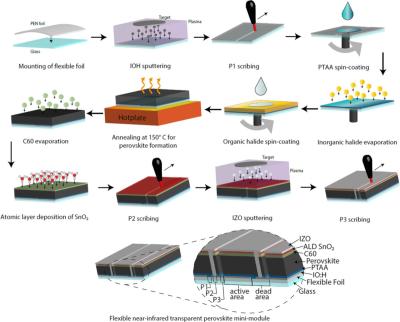Researchers demonstrate laser-driven control of fundamental motions of the lead halide perovskite atomic lattice
An international team of scientists from Fritz Haber Institute of the Max Planck Society, École Polytechnique in Paris, Columbia University in New York, and the Free University in Berlin have demonstrated laser-driven control of fundamental motions of the lead halide perovskite (LHP) atomic lattice.
Sketch of the experimental pump-probe configuration. Image from Science Advances
By applying a sudden electric field spike faster than a trillionth of a second (picosecond) in the form of a single light cycle of far-infrared Terahertz radiation, the team unveiled the ultrafast lattice response, which might contribute to a dynamic protection mechanism for electric charges. This precise control over the atomic twist motions could allow to create novel non-equilibrium material properties, potentially providing hints for designing the solar cell material of the future.
